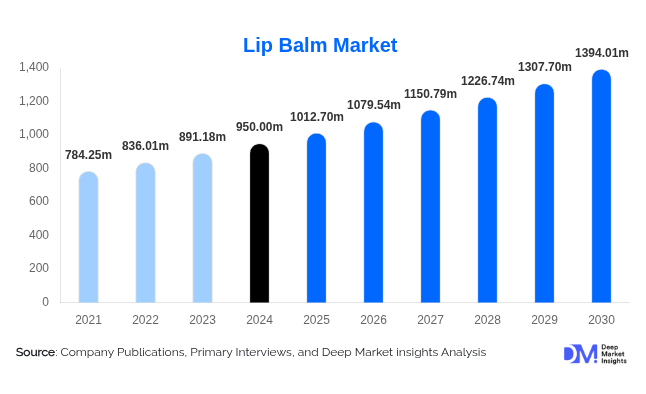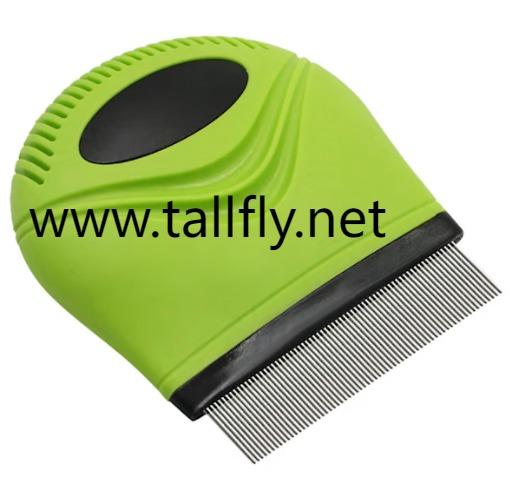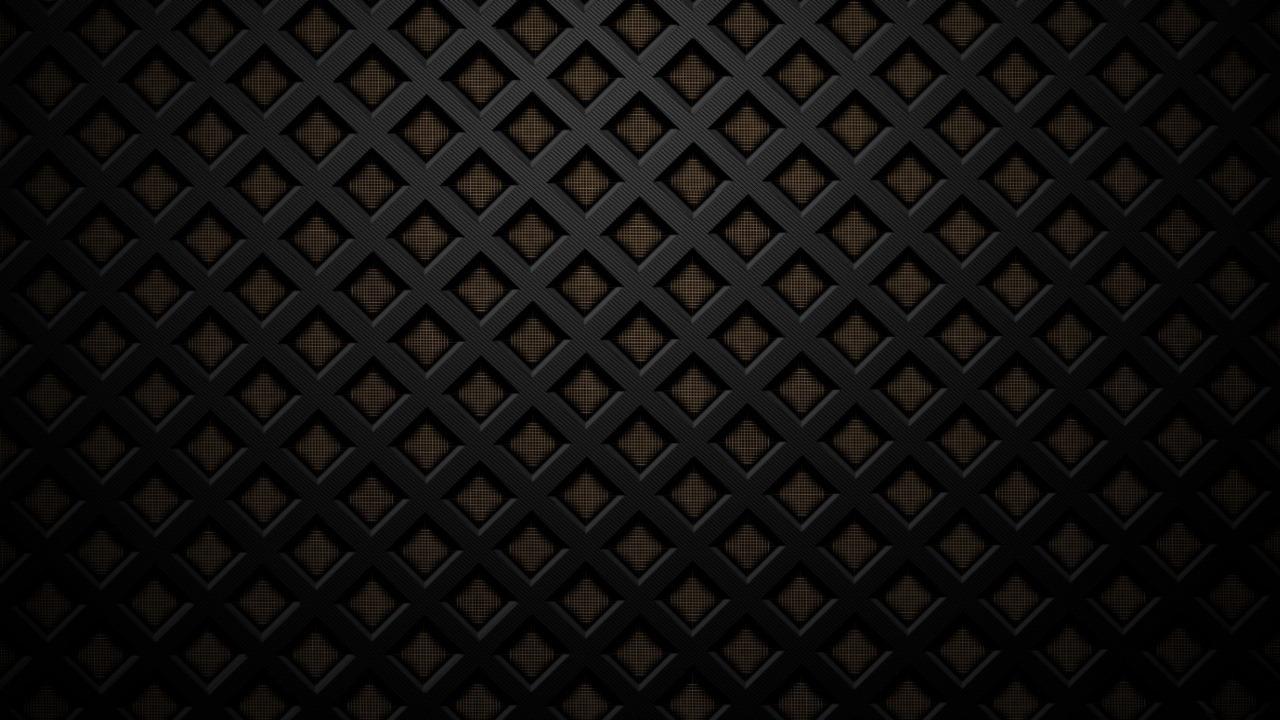Global Lip Balm Market Set to Reach USD 1.39 Billion by 2030, Driven by Innovation, Sustainability, and Expanding Consumer Base

According to Deep Market Insights, " The global lip balm market, valued at USD 950 million in 2024, is projected to grow from USD 1,012.70 million in 2025 to USD 1,394.01 million by 2030, reflecting a compound annual growth rate (CAGR) of 6.6%." Growth is being propelled by heightened awareness of lip health, rising demand for natural and multifunctional products, and the influence of social media platforms on consumer purchasing behavior.
Market Growth Drivers
Lip balms are increasingly viewed as essential daily care products rather than seasonal items. Consumers now seek hydration, UV protection, tint, and therapeutic benefits in a single application. Demand for natural ingredients and clean-label formulations is shaping purchasing patterns, while platforms like TikTok and Instagram have fueled the popularity of tinted and SPF-infused balms. Beauty influencers continue to accelerate trial and brand discovery, particularly among younger consumers.
Innovation, sustainability, and premiumization remain central to the market’s next growth phase. Leading brands are adopting eco-friendly packaging, plant-based formulations, and advanced skincare benefits such as anti-ageing and barrier repair. Companies that combine functional performance with ethical practices are positioned for long-term competitiveness.
Key Insights
-
Format: Solid balms dominate due to portability, ease of use, and durability.
-
Demographics: Women are the largest consumer group, while men’s and baby care segments show steady expansion.
-
Applications: Products for dry and sensitive lips are growing fastest, with clinically tested, soothing formulations in high demand.
-
Regional Trends: North America remains the largest market, while Asia-Pacific is the fastest-growing region, driven by youth demand, mobile commerce, and regional beauty trends.
Emerging Market Trends
-
Premium and Luxury Lip Balms: The segment is expanding rapidly as consumers equate high-end beauty with self-care. Luxury launches such as Dior’s Addict Lip Glow Butter and Chanel’s Rouge Coco Baume illustrate the growing appeal of hybrid skincare-makeup products.
-
Sustainability and Clean Formulations: Eco-conscious packaging and petroleum-free, naturally derived ingredients are becoming standard. Brands investing in biodegradable tubes, refillable formats, and cruelty-free certifications are gaining preference among ethically minded consumers.
-
Male Grooming and Unisex Branding: The men’s lip balm industry is forecast to reach USD 250 million by the end of 2025. Clean, minimalist designs and unisex branding from players like Nivea and Malin+Goetz are broadening market appeal across demographics.
-
Smart Formulations and Climate-Specific Solutions: Balms that adapt to skin pH, deliver extended hydration, or target environmental conditions are gaining traction. Regional innovation—such as Maybelline’s Baby Lips Glow Balm in Southeast Asia and Burt’s Bees products for colder climates—reflects a growing emphasis on customization.
Market Challenges
The lip balm industry faces oversaturation, with many brands offering similar formulations. Low-cost alternatives challenge differentiation, while health-conscious consumers increasingly reject petroleum-based and synthetic ingredients. Transparency, clean labeling, and clear storytelling will be essential for brands to maintain trust and loyalty in a crowded marketplace.
Opportunities Ahead
Demand is rising for multifunctional lip care products that combine hydration, SPF, tint, and anti-ageing benefits. Recent innovations, such as Prada Beauty’s PH-adaptive Astral Pink Balm and Glossier’s antioxidant-enriched Balm Dotcom relaunch, highlight the industry’s shift toward hybrid solutions that merge cosmetics with skincare.
Regional Outlook
-
North America: Leads the global market, supported by strong retail distribution and seasonal usage patterns. Ingredient transparency and dermatologist-tested claims drive purchasing behavior.
-
Asia-Pacific: The fastest-growing region, fueled by youth demographics, mobile commerce, and influence from K-beauty and J-beauty trends.
-
Europe: Prioritizes clean ingredients, sustainability, and regulatory compliance. Demand is shaped by eco-packaging and dermatologist-backed claims.
Competitive Landscape
The global lip balm market is characterized by a mix of established brands and emerging entrants, all competing on innovation, sustainability, and multifunctionality. Market leaders include:
-
NIVEA (Beiersdorf AG) – Achieved 9% organic sales growth in 2024, driven by Labello line performance and new product launches.
-
Burt’s Bees, EOS, Carmex, ChapStick, Vaseline – Continue to dominate household and retail categories with trusted, accessible products.
-
Luxury and New Entrants – Dior, Prada, Glossier, and Rhode are gaining traction with premium, multifunctional, and influencer-driven launches.
Recent Developments
-
July 2025: Rhode (Hailey Bieber) released a new Peptide Lip Tint shade, Lemontini, following its $1 billion acquisition by e.l.f. Beauty.
-
July 2025: Sweet July (Ayesha Curry) launched tropical-flavored lip treatments targeting seasonal needs.
-
May 2025: Laneige introduced limited-edition Matcha and Taro flavors of its Lip Sleeping Mask, reinforcing its strategy of blending efficacy with cultural appeal.
Outlook
As lip care increasingly converges with skincare and beauty, the global market is poised for robust expansion. Brands that innovate with multifunctional benefits, eco-friendly packaging, and inclusive branding will drive the next phase of growth. By 2030, the lip balm industry will exceed USD 1.39 billion, reflecting its evolution from a basic care item into a dynamic, consumer-driven beauty category.






